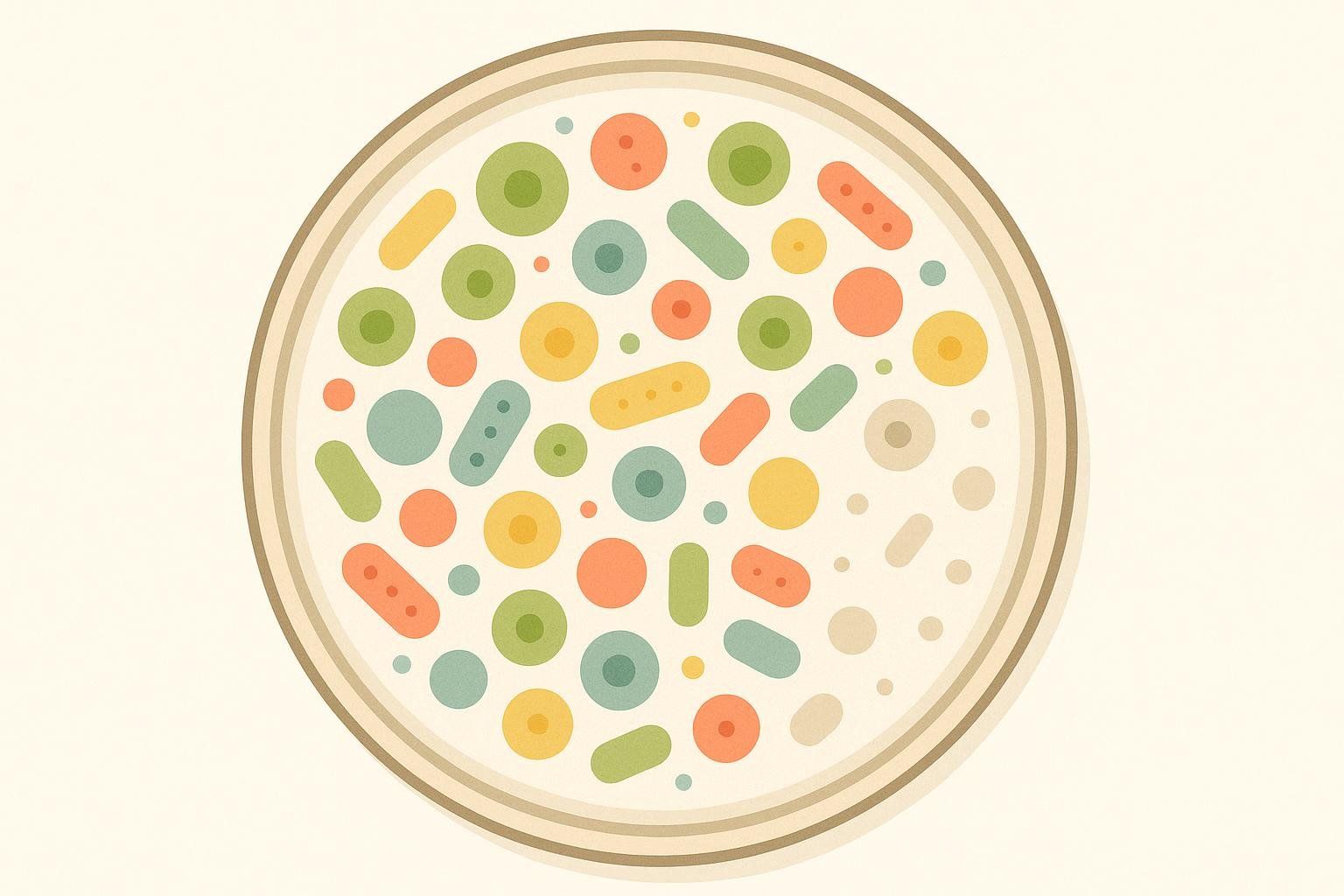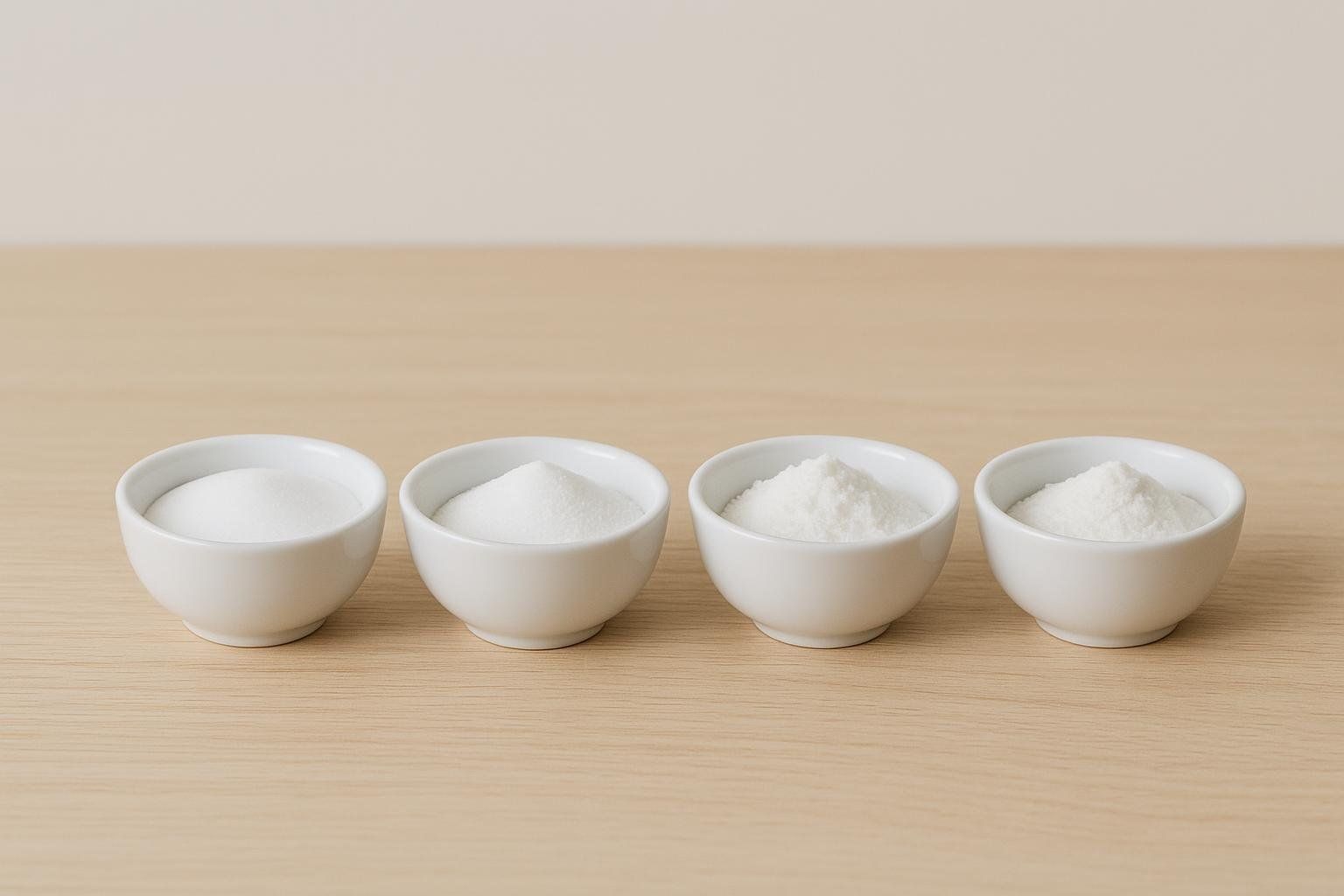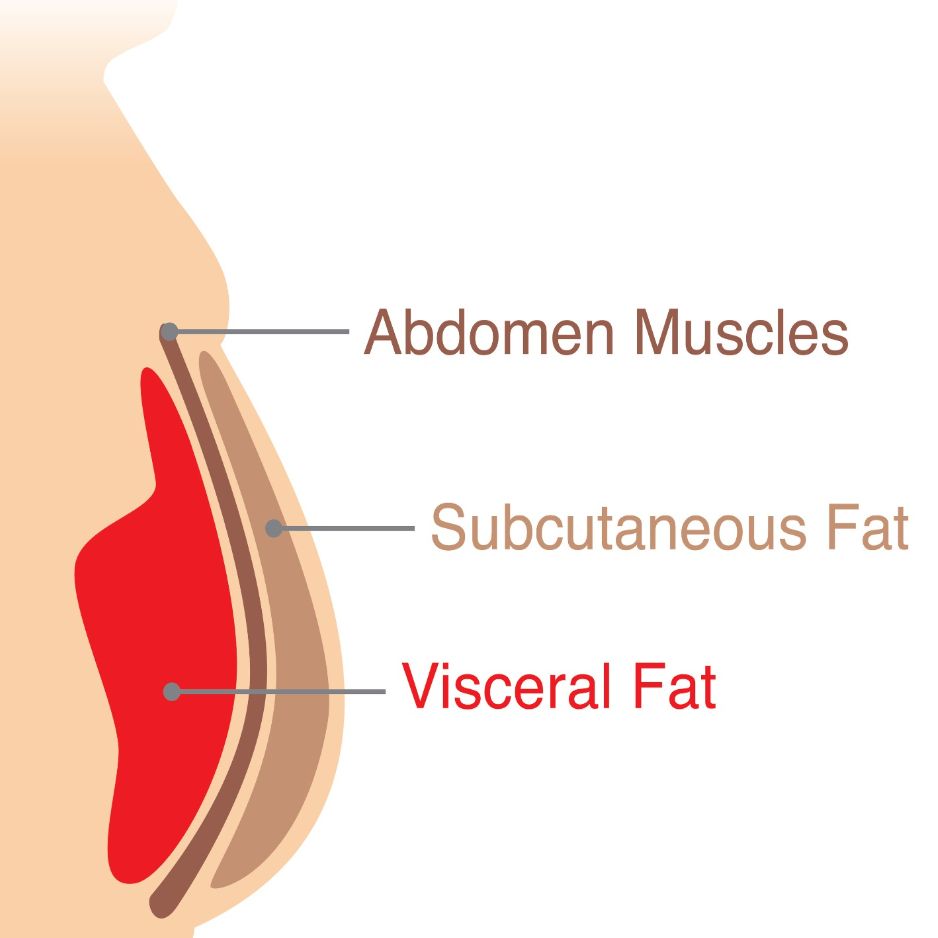Acesulfame Potassium: Safety, ADI, and Usage Guide

Acesulfame Potassium: Safety, ADI & Usage Guide
Acesulfame potassium may sound like a chemistry-lab tongue twister, but chances are you’ve enjoyed its sweetness in everything from diet sodas to sugar-free gum. Is it safe? How much is too much? And how does it stack up against other sweeteners? This guide answers those questions with data-driven clarity—and even lets you calculate your personal safe intake.
Quick-Look Facts
| Metric | Value |
|---|---|
| Relative sweetness vs. sugar | ~200× sweeter |
| Calories | 0 kcal/gram |
| Heat stability | Stable up to 200 °C / 392 °F—great for baking |
| FDA Acceptable Daily Intake (ADI) | 15 mg per kg body weight per day FDA |
| EFSA ADI | 9 mg/kg/day EFSA |
| Typical U.S. adult intake | ≈1.8 mg/kg/day IFIC |
ADI Calculator: What’s Your Daily Limit?
The ADI is the lifetime amount considered safe to consume every day. To find your personal ceiling, multiply your body weight in kilograms by 15 mg.
Personal ADI (mg/day) = Body weight (kg) × 15
Example: A 150-lb (68 kg) person → 68 kg × 15 mg = 1,020 mg/day.
💡 Reality check: One tabletop packet of Ace-K sweetener contains about 39 mg of acesulfame potassium UBC nutrition handout (PDF). Our 150-lb example would need roughly 26 packets every single day to reach the limit.
1. What Exactly Is Acesulfame Potassium?
Acesulfame potassium (a.k.a. Ace-K, Ace K, or E950) is a high-intensity artificial sweetener discovered in 1967. Because it’s ~200 times sweeter than sucrose, manufacturers need only trace amounts to hit the same sweetness target—keeping calories at zero WebMD.
Where You’ll Find It
• Diet sodas and flavored waters
• Sugar-free candies & chewing gum
• Protein shakes & flavored yogurt
• Baked goods and tabletop sweeteners
• Condiments like ketchup and BBQ sauce
Its heat stability and long shelf life make it a formulator’s dream, especially compared with aspartame, which degrades under high heat or low pH.

2. Is Ace-K Safe? Here’s What the Science and Regulators Say
Regulatory Green Lights

• U.S. FDA: Approved since 1988; ADI = 15 mg/kg/day FDA.
• EFSA (Europe): ADI = 9 mg/kg/day following a 2023 re-evaluation.
• JECFA (WHO/FAO): ADI = 15 mg/kg/day.
• Other countries: Canada, Australia/NZ, Japan, and 100+ more also approve it.
Human Safety Data
- No carcinogenic signal in lifetime rodent studies at doses up to 3,000 mg/kg/day, which is more than 200 times the human ADI EFSA.
- Non-metabolized: The compound is absorbed and then excreted unchanged in urine within about 24 hours, so it doesn’t linger in tissues IFIC.
- No effect on blood glucose—helpful for people with diabetes Medical News Today.
Emerging Research & Controversies
The most prominent concern involves potential shifts in the gut microbiome and downstream metabolic effects. Evidence remains mixed.
3. Gut Microbiome: What 2022 Research Reveals

A 2022 Frontiers in Nutrition review reported that Ace-K can alter gut bacterial composition in rodents. The review also noted that some sweeteners may impair glucose tolerance in susceptible individuals, though human data on Ace-K specifically is still limited Frontiers.
• Akkermansia muciniphila depletion: This beneficial mucus-loving bacterium dropped after Ace-K exposure in mice—often linked to worsened metabolic health.
• Responder vs. non-responder humans: A small human study on saccharin found only some participants experienced microbiome-driven glucose issues—hinting genetics and baseline microbiota matter.
Bottom line: At real-world intakes far below the ADI, solid human data show minimal risk, but scientists are still mapping long-term microbiome interactions.
For broader gut-health context, check out our microbiome primer: BodySpec Gut Health Guide.
4. Ace-K vs. Other Sweeteners

| Feature | Ace-K | Sucralose | Aspartame | Stevia (Reb A) |
|---|---|---|---|---|
| Relative sweetness | 200 × | 600 × | 200 × | 250–300 × |
| Calories | 0 | 0 | 4 kcal/g (trace use) | 0 |
| Heat stability | Excellent | Very good | Poor | Good |
| After-taste | Mild bitter; often blended | Slight chemical at high doses | None; but degrades | Licorice-like |
| ADI (mg/kg) | 15 | 5 | 50 | 4 (as steviol eq.) |
| Notable caveats | Microbiome data emerging | High-dose gut data | Requires warning for people with phenylketonuria (PKU) | High-purity extracts have FDA GRAS status |
5. Practical Tips for Consumers
- Scan the label. Look for “acesulfame potassium,” “Ace-K,” or “E950.”
- Blend wisely. Manufacturers often pair Ace-K with sucralose or aspartame for a cleaner taste; you can do the same at home.
- Mind the bigger picture. A diet soda can help curb calories, but water, coffee, or tea keep your palate less dependent on intense sweetness.
- Track cravings. Reducing overall sweet exposure can dial down sugar urges over time. Start with our 19 proven sugar-craving fixes.
6. Formulation Corner (For Food Developers)
| Parameter | Ace-K Specs |
|---|---|
| Optimal pH range | 3–7 (stable below neutral) |
| Thermal stability | No significant loss up to 200 °C for 30 min |
| Synergy | 1:1 with sucralose boosts sweetness by ~30 % |
| Impurity limits (FCC) | ≤ 0.5 % organic impurities; ≤ 0.1 ppm arsenic |
| Labeling (US) | “Acesulfame potassium” or “acesulfame K” |
| Kosher/Halal | Typically certified, but confirm supplier docs |
7. Frequently Asked Questions
Does acesulfame potassium cause cancer?
Systematic reviews and EFSA’s 2023 risk assessment conclude no carcinogenic effects at doses far exceeding human exposure.
Can Ace-K raise blood sugar?
It does not metabolize into glucose and therefore doesn’t spike blood sugar. However, appetite and gut-microbiome pathways are still under investigation.
Is Ace-K safe during pregnancy?
Yes—regulators allow normal consumption within the ADI. As with any food additive, moderation is prudent; consult your OB-GYN if unsure.
How many diet sodas equal the ADI?
A 12-oz can of Coke Zero contains about 46 mg of acesulfame potassium Coca-Cola Canada product page. For our 150-lb example (ADI = 1,020 mg/day), 1,020 ÷ 46 ≈ 22 cans would hit the limit.
Does the potassium affect heart health?
A packet contains < 1 mg potassium—trivial compared with a 422-mg banana.
Is it OK for kids?
Ace-K is considered safe within the ADI; however, health experts generally recommend limiting sweetened beverages for children in favor of water or milk.
What about pets?
Ace-K is not xylitol; it’s generally safe for dogs and cats, but keep human treats out of reach.
Can I bake with Ace-K alone?
Yes for sweetness, but it lacks bulk. Combine with erythritol or fiber for structure.
Does Ace-K break a fast?
It contributes zero calories, so most intermittent-fasting protocols allow it.
Is Ace-K natural?
No. It’s synthesized from acetoacetic acid derivatives and sulfamic acid salts Celanese.
How is Ace-K different from aspartame?
Aspartame contains amino acids and loses sweetness with heat; acesulfame potassium is heat-stable and contains sulfur & potassium.
Should I worry about gut microbiome damage?
Current human data don’t show clinically meaningful harm at typical intakes, but research is ongoing—diversify your diet and fiber sources for microbiome resilience.
Key Takeaways
• Regulators worldwide confirm Ace-K’s safety up to 15 mg/kg/day (FDA).
• Real-world intakes sit ~8 × below that ceiling.
• Emerging research on gut microbes suggests individualized responses—stay informed.
• For most people, Ace-K can be a calorie-cutting ally when used mindfully.

Ready to quantify the real impact of your nutrition choices? Pair dietary tweaks with BodySpec DEXA scans to see how your body composition shifts over time.


